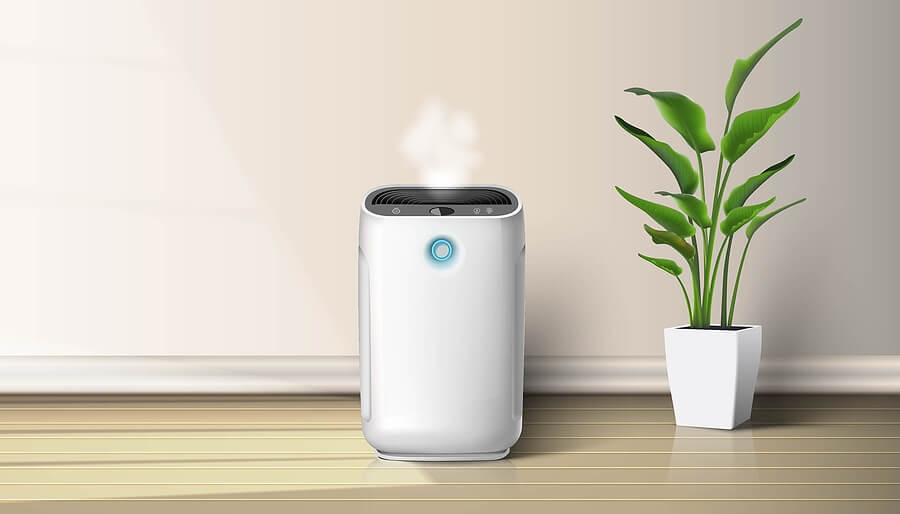Relative humidity (RH) is a vital factor that contributes profoundly to a home’s comfort and health of occupants. Comfortable levels range between 40% and 60%, with the ideal level being 45 percent. However, these levels can change dramatically depending on such factors as temperature and location of the home. As such, homeowners need to maintain the right relative humidity levels to make their indoor environment comfortable and healthy especially when they have kids.
How can a person tell the level of humidity in their home? The simplest, most inexpensive and accurate way of measuring the RH levels in an indoor environment is using a hygrometer. This device works like a thermometer but shows the percentage amount of humidity at a particular space in a given temperature. It’s only by use of an accurate way of determining the RH levels in a house that homeowners can be successful in maintaining them at around 45%.

The Dangers of Low RH Levels
Low RH levels indicate that the indoor environment doesn’t have enough moisture. This often occurs during the winter because cold air holds less moisture than warm air. Also, homes that use forced air heaters experience aggravated low humidity issues because items like furnaces utilize combustion to warm up the indoor environment, which burns out the existing moisture.
Low RH levels can potentially cause some health complications that include increased vulnerability to cold and respiratory issues as well as dry skin and hair that can make kids or infants feel uncomfortable. Also, it causes paint to chip and wooden items like floors and furniture to split and crack. Low humidity levels could also lead to static electricity, which can damage electronics, computers and musical instruments.
This begs the question, how can a homeowner combat low humidity levels? The most effective method of increasing humidity levels in a home is through the use of humidifiers. Although they come in different types, the basic operation of these devices is dispersing water vapor in an indoor environment. Some of these appliances need to be constantly filled with water to function. Others are installed in the HVAC system, and they are directly connected to the main water pipes. When purchasing a humidifier, it’s imperative to get one that can efficiently cover the square footage of the area requiring humidifying.
Are High RH Levels Hazardous?
RH levels are usually high during the hot seasons, but they are also common in homes located close to the coastal regions. When the RH levels elevate, homeowners may detect several changes around their home. They may, for instance, detect a musty smell in the indoor environment or realize that they are sweating excessively while sipping lemonade on the kitchen counter. Homeowners may also detect condensation around the windows, which is especially true during the cold seasons. This happens when the warm indoor air comes into contact with the freezing air from outside through the windows.
If the house lacks a ventilation system, the excess vapor might settle on the walls, ceilings, and insulation. This causes the paint on the walls to peel out and also leads to mold growth. The ultimate result could be a myriad of health problems that include respiratory issues and allergy and could be dangerous for kids. High humidity level also causes rot on the dry walls or wooden structures like floors, building materials, and furniture.
Areas that are notoriously susceptible to high RH levels include the basements, which is largely related to water leakage. Other areas include the kitchens, bathrooms and laundry rooms. It’s also important to note that rooms that are close to the areas that are susceptible to high RH levels can also be affected.
There are two ways of reducing the RH levels in homes, One is by installing exhaust fans in rooms that are highly susceptible to high humidity. This, however, requires a lot of work and can be very expensive. The second and most favorable method is having a dehumidifier. While these devices come in many sizes and types, they have a common purpose; eliminating dampness from the indoor environment. They suck in the overly saturated air and run it through coils over which a fan blows cold air, which causes the vapor to condense. The condensed vapor then drips into a collection tank that can be emptied when full. Homeowners may also use pipes to direct the water into a designated drain area. This last option will especially come in handy for basements.
Maintaining the ideal RH levels in a home is extremely important to the occupants’ health and the structural integrity of their property. While moisture is beneficial for the indoor environment, too much or too little of it can cause health issues and promote the growth of mold and dust mites. Extremely low or high RH levels can also cause damage to household items such as furniture, musical equipment, and electronics. Depending on the humidity levels in a home, the homeowner will either need a dehumidifier or humidifier to help maintain the levels at around 45%.


